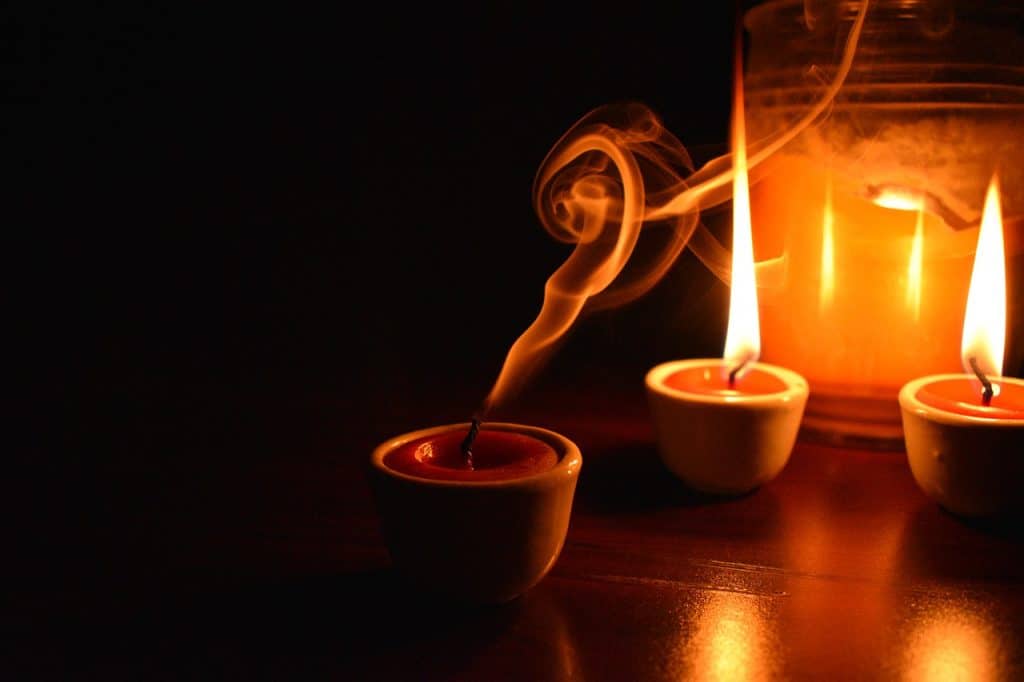Weak or tiny flame is a problem chandlers and candle users encounter while burning candles or testing candles during production. This problem gives great concerns to them as most people (users especially) contemplate disposing these candles as they do not perfectly serve the purpose for which they are purchased. How to fix a candle with tiny flame? The problem of tiny flame can be fixed in many cases; the best way to go about this problem is to know what exactly the likely cause is. Some of the likely causes of tiny flames include:
- Length of wick; Too short or too long wick
- Absence of oxygen
- Wrong choice of container
- Excess fragrance oil
- Excess dye
- Wrong choice wick
In this article you’ll learn how to fix the problem of tiny flames, following the likely causes.
How to fix too short or too long wicks
A properly trimmed wick should be ½ or ¼ inches above the wax. When the candle wax is too long or too short or has broken off at base of the candle, the flame will not be enough to burn the wax.
If your candle wick is too short and burns with a tiny flame, tossing it aside is not the best thing to do. Things you can do to fix the problem include:
- Burning the candle for long: burn candles with short candle wicks for a long while (not longer than 3 hours) to form a consistent puddle of melted wax. This prevents drowning of the wick caused by tunneling.
- Take off excess wax: when a candle wick is short, it is most likely covered in excess wax. To remove this excess wax, burn the candle for about 30 minutes then pour out the liquid wax deposed at the top on a piece of paper and allow to cool then dispose. Another way to take of this excess wax is by using a cotton swab to soak up the melted wax after extinguishing the flame. This way excess wax is taken off and the wick becomes longer. Excess wax can also be taken off using a knife, by scraping off the excess wax at room temperature; this should be done carefully in order for the wick not to cut. Also, after doing this, make sure the wick is not too long because very long wicks can produce dangerously large flames.
Despite a long wick’s ability to produce large flames, it can also be the reason why a candle burn with tiny flame, in some kinds of candle. This is because the candle with long wick would burn at a very high pace and after a while all the oil needed from the wax to burn might have been used up and at this point the candle burns with a very tiny flame or doesn’t burn at all.
Cottonwood wick is popular kind of wick that burn with low flame. A candle made from cottonwood wick burns perfectly for about 2 hours and after that may not give the required flame size.
How to fix the issue of shortage of oxygen
For a candle to continue burning it needs to draw oxygen from the surrounding air. When candles are lit in areas with limited supply of air (oxygen), they struggle to burn and even when they burn, burn with tiny flame. The best way to handle this issue is to move the candle to an area with sufficient supply of air.
How to choose the best kind of container of candles
After making sure the container you choose for your candle is heat resistant, the next thing to consider is how it might affect the flame size of your candle. When a candle container has a small opening it might not support burning as oxygen would hardly enter the container and oxygen is what aids burning of candles. Also, when the container is too big and the candle is relatively small, the candle becomes far away from oxygen and this maybe lead to the candle burning with tiny flame.

How to handle the issue of excessive use of fragrance oil
Excess fragrance oil can affect the flame of a candle; this is because the fragrance oil may inhibit the wick by clogging. Fragrance oil must not exceed 10% of the total wax quantity if this would be avoided. Read more about the dangers of scented candles.
How to handle the issue of excessive use of dye
Excess dye affects the flame of candles in a similar manner like excess fragrance oil. When dyes are in excess they may cause clogging on the wick thereby inhibiting it and causing it to burn with low flame.
How to choose the best wick type
The purpose of wick is to liquefy the wax, thereby propelling it to burn. Choosing the correct wick type is a critical to getting the right flame size. Before choosing the kind of wick for making candles, it is very important to consider the shape, color, size and fragrance material you want to use for making the candle.
For pillar and taper candles, the best kind of wick to use is flat wick – flat wick is made fiber that has been plaited or knitted. Candles made with beeswax are best made from braided or knitted square wax. Jar candles and votive candles use wicks that are braided or knitted and cored with a material like zinc, cotton or paper to give it a straight structure and desired level of stiffness. Candles like oil lamp candles and insect repellant candles have special kinds of wicks for making them. Cored wick is a bad choice for making soy candles.
Conclusion
For a chandler, the best way to get the best results in your candle making process is through proper tests. It is best you test different combinations of ingredients to arrive at the best recipe for your perfect candle that burn with the right flame size. This way everyone would be happy- you’d be happy and your customers too will be happy. If you are a candle user and are facing this problem you might want to check out the wick size, ventilation and/or the containers in which your candles are.




